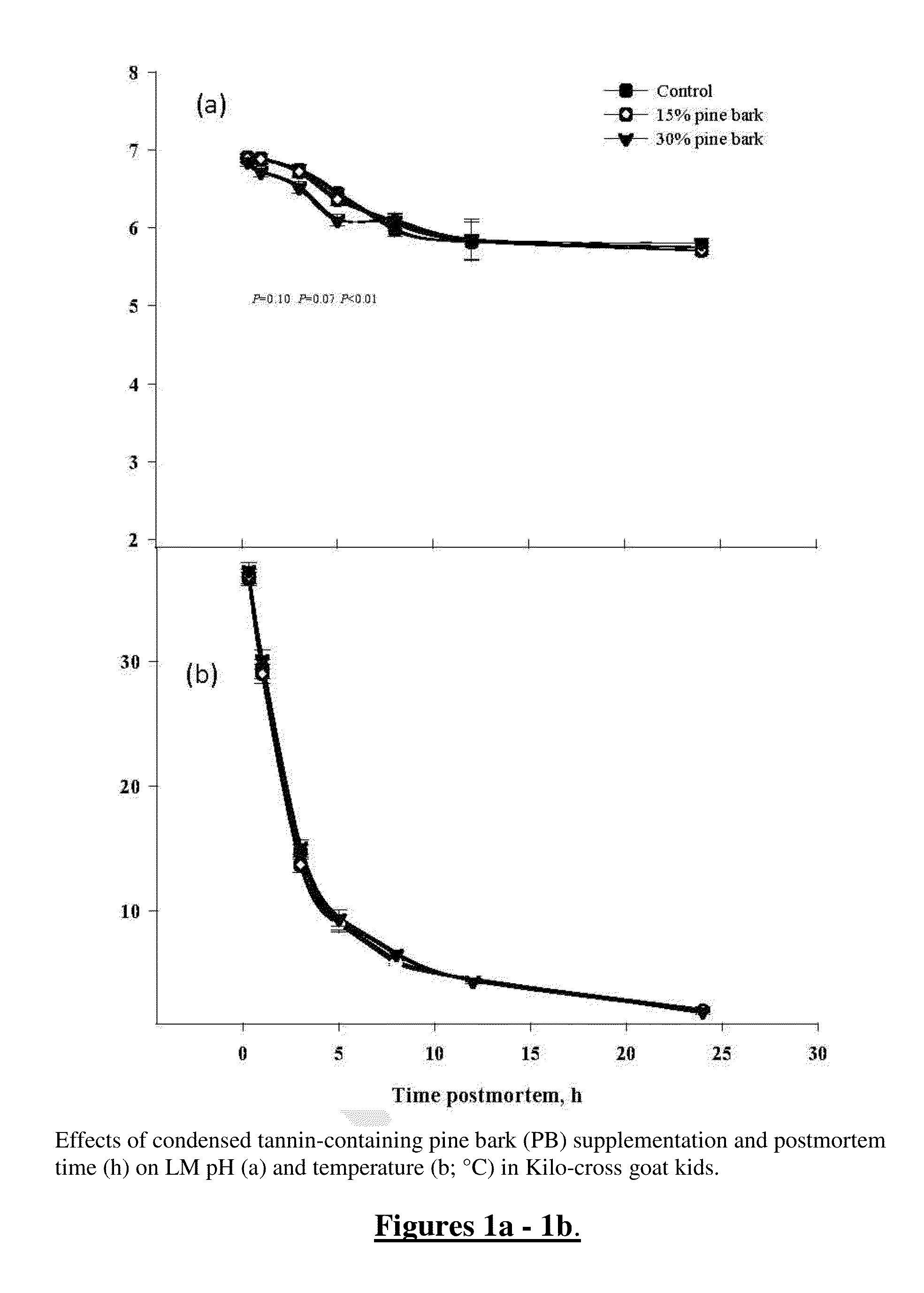Feed supplement products and methods of using such products for improved raising of ruminant livestock animals
- Summary
- Abstract
- Description
- Claims
- Application Information
AI Technical Summary
Benefits of technology
Problems solved by technology
Method used
Image
Examples
Example
Experiment 1
[0028]Eighteen Kiko-cross goats (33.4±0.98 kg; n=6) were used to determine the impact of pine bark (PB), which contains condensed tannins (CT), such as Proanthocyanidins), on dry matter (DM) intake, fecal dry matter output, fecal bacterial diversity and in vitro methane gas production. PB supplementation to a base wheat straw (WS) and standard grain mix diet occurred as follows, with 7 days total fecal collection and 2 treatment periods. The 18 subject goats were assigned to one of three experimental treatment regimens that included: the control diet of 0% PB and 30% WS (0.17% CT DM); 15% PB and 15% WS (1.6% CT DM) and 30% PB and 0% WS (3.2% CT DM) as fed. Freshly dried PB and WS were finely (1.5-3 mm) ground and incorporated in the grain mix portion of the diet to provide 0 g, 16 g, and 32 g CT / kg DM in 0%, 15%, and 30% PB diets. Fecal bacterial populations were measured using a 16S-based pyrosequencing technique to characterize and elucidate changes in bacterial divers...
Example
Experiment 2
[0031]A series of in vivo and in vitro trials utilizing ground pine bark additive over a range of dosages (0, 15 and 30% of total feed intake) with growing Kiko-cross goat kids were conducted under Experiment 2. Goats were strategically de-wormed with commonly used anthelmintic to reduce or eliminate gastro-intestinal parasites; however, most resistant worms survived under controlled environment. The most significant finding of this work was that average fecal egg counts (an indication of parasite load) was reduced by 52 to 56% with 15-30% pine bark inclusion (Table 8). More significantly, these were resistant worms that were eliminated. Feeding pine bark at 15-30% of diet improved average daily gain (by 49%) and feed efficiency linearly (Table 2). There was no difference in initial body weight of goats; however, final body weight (9%), cold carcass weight (10.5%), and sirloin (15.3%) yields were linearly increased with increasing pine bark additive (P<0.06-0.01) in the ...
PUM
 Login to View More
Login to View More Abstract
Description
Claims
Application Information
 Login to View More
Login to View More - R&D
- Intellectual Property
- Life Sciences
- Materials
- Tech Scout
- Unparalleled Data Quality
- Higher Quality Content
- 60% Fewer Hallucinations
Browse by: Latest US Patents, China's latest patents, Technical Efficacy Thesaurus, Application Domain, Technology Topic, Popular Technical Reports.
© 2025 PatSnap. All rights reserved.Legal|Privacy policy|Modern Slavery Act Transparency Statement|Sitemap|About US| Contact US: help@patsnap.com

